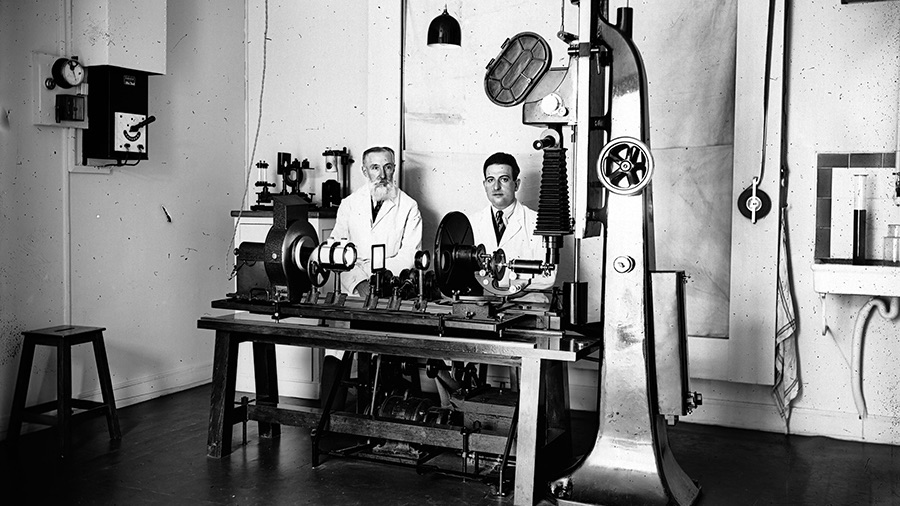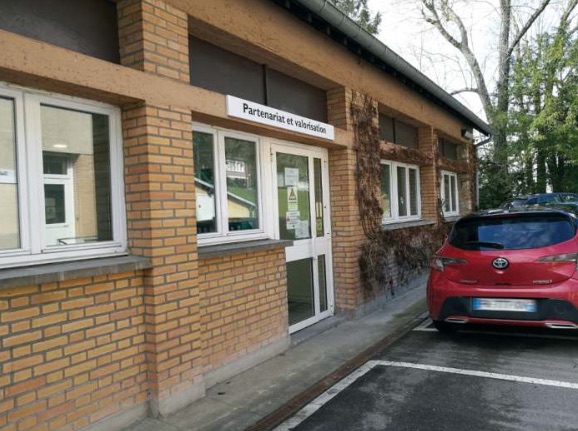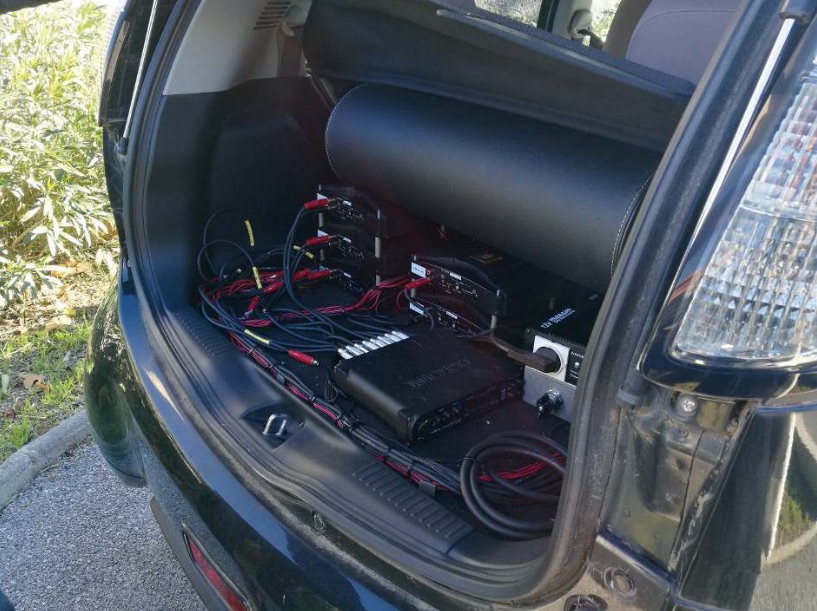Valorisation at CNRS through the prism of sociology of sciences

© Fonds historique / CNRS Images
Valorisation has been an official mission of CNRS since 1982 [1]. Although research practices at the interface with the socio-economic world are nothing new [2], they have been facilitated since the 1990’s by a proliferation of new public policy instruments. Dedicated bodies have also been set up at the CNRS, which include the FIST SA subsidiary [3] in 1992, the partnership and development departments within the regional offices in 1996, the Partnership Department (DAE) [4] in 1998, and the Innovation Board in 2018. To help them navigate this complex ecosystem, in 2017 the heads of the valorisation departments of the CNRS Institutes asked for reflective feedback on their activities, through a doctoral research. Maria Teresa Pontois (Institute of Social Sciences and Humanities – INSHS) and Katia Cargnelli-Barral (Institute of Engineering and Systems Sciences – INSIS) took on the responsibility of supporting the project with Michel Mortier, then General Delegate for Technology Transfer, and later with Alain Schuhl, General Delegate for Science. Alain Schuhl suggested applying for funding as part of the multi-team interdisciplinary research projects coordinated by the Mission for Transversal and Interdisciplinary Initiatives (MITI) to mark the 80th anniversary of the CNRS. The conditions of the project were then discussed with David Pontille, CNRS Senior Researcher at the Centre for the Sociology of Innovation (CSI) of the Interdisciplinary Institute of Innovation [5], who had taken on the responsibility of supervising the forthcoming PhD. Victoria Brun was recruited to begin this investigation in October 2019, drawing on her expertise in sociology of science and mixed methods acquired during her postgraduate studies. This article presents several of the methodological issues of the inquiry she conducted.
Definitional issues
Adopting an inductive approach, the aim of a first empirical phase with the CNRS transfer and partnership departments was to map out what the CNRS valorisation officers referred to as “valorisation”.
The first observation relates to the thin demarcation between valorisation and dissemination, whereby established knowledge is passed on, and expertise, involving the formulation of recommendations based on specialist knowledge of a given subject. While common parlance would probably include publication in a scientific journal or a radio interview as part of research valorisation, the CNRS valorisation services do not deal with research activities aimed at another audiences than academic peers. They only deal with activities that meet two criteria: generating new knowledge and creating new values (economic, social, environmental, etc.).
The second observation is that valorisation does not conflate with applied research. The underlying rationale to valorise research results does not indicate its valorisable nature: it is quite possible to develop applications from basic research, even if it is more time-consuming and costly. In the same way, valorisation does not overlap with action research: researchers may not be involved in implementing the developments subsequent to their discoveries.
The third observation is that many different definitions of valorisation exist and are evolve. They are updated in the course of action and discussed by the people in charge of valorisation, the project leaders and the innovation managers. These discussions relate particularly to two major topics at the time of the inquiry: open source software and the creation of companies under SCOP [6] status.
Investigating the CNRS
The CNRS is the largest public research organisation in Europe. Its distinctive feature is that it covers all scientific disciplines. Quantitative analyses were used to build up an overall picture of the distribution of CNRS staff, the volume of transfer activities, and the profile of the recipients of the Innovation Medal. Case studies were then selected to investigate some areas in greater depth. Compared with so-called representative methods in the social sciences, the aim of case study is to document, on the basis of a dense corpus of data, the singular ways in which the phenomena studied are embedded in general trends.

© Victoria Brun
Even before Victoria Brun was recruited, the heads of the Institutes’ valorisation departments had identified the Engineering and Systems Sciences (ESS) and the Humanities and Social Sciences (HSS) as relevant cases, given that their valorisation practices are extremely different. It could therefore provide a broad overview. ESS has a long history of rich relationships with applied research and industrial partnerships. HSS, for their part, bring together a variety of disciplines that are not necessarily as easily transferable to economic partners.
Within these two disciplines’ groups, five projects were selected in collaboration with Maria Teresa Pontois and Katia Cargnelli Barral, in order to provide a contrast in terms of geographical location, disciplines, subjects, status of the project initiators, and methods of dissemination.
Investigating public research in the context of a health crisis
The original purpose of the inquiry was to carry out a multi-situated ethnography consisting of immersions in the work of actors throughout the valorisation chain. The covid19 crisis obviously compromised the pursuit of this methodology, and reconfigured the inquiry.
Concerning the institutional aspect, interviews were conducted by videoconference with selected actors using three methods: an exhaustive identification of people in charge of research valorisation within the institutes, the selection of key persons in other departments, and a snowball sampling, including people outside the institution with whom CNRS staff were working (at the National Agency for Research or in Technology Transfer Acceleration Companies, for example). This corpus of around fifty interviews was supplemented by direct observations of training courses, funding committees, meetings, trade fairs and events, along with their productions (presentations, slideshows, brochures, articles). In parallel, legal texts and parliamentary reports on research funding were analysed, as well as CNRS’s activity reports or objectives and performance contracts.
Concerning the research practices aspect, the five selected valorisation projects were investigated through a series of interviews with their members, observations (of experimentations, meetings, public events, etc.) and the analysis of their productions (reports, deliverables, theses, application files, etc.). A major task consisted in reconstructing the trajectory of the valorisation projects from the multiple points of view of their members, including episodes that are rarely recounted in public presentations: their failures, backtracking, hesitations, circumstantial choices.
Despite the constraints of the health context, Victoria Brun benefited from exceptional access to the field thanks to the PhD contract that granted her the status of CNRS employee. Interviewees agreed as well to dedicate time to the inquiry. This unprecedented empirical input has made possible to document that valorisation trajectories are the result of distributed work between valorisation officers, researchers, doctoral students, engineers, technicians and socio-economic partners, depending on the configuration in which these collaborations take place.
Contributions of an on-going research project
Ultimately, this research project will provide insights on numerous issues:
- Do valorisation activities meet and reconfigure more traditional academic activities?
- How does innovation emerge at the CNRS? Through what efforts, devices, actors and actresses is it transformed?
- What relationships do these practices foster between science and society?
Contact: Victoria Brun
This article was originally published in the Lettre de l’InSHS: Brun V. 2023, La valorisation au CNRS au prisme de la sociologie des sciences, Lettre de l’InSHS n°83, pp. 17-19.

[1] Article 2, law n° 82-993 of 24 November 1982.
[2] Pestre D. 1997. La production des savoirs entre académies et marché – Une relecture historique du livre : « The New Production of Knowledge », édité par M. Gibbons. Revue d’économie industrielle, 79, 1 : 163 174.
[3] Now CNRS Innovation.
[4] The forerunner of the Business Relations Department (DRE).
[5] Interdisciplinary Institute of Innovation (i3, UMR9217, CNRS / Mines Paris / Télecom Paris / École polytechnique).
[6] SCOP: Société coopérative et participative [Co-operative Company of Production].
[7] Grossetti M. 2016. Dynamique des disciplines : l’exemple des sciences de l’ingénieur en France. In Benninghoff M., Crespy C., Charlier J.-É., Leresche J.-P. (dir.), Le gouvernement des disciplines académiques : Acteurs, dynamiques, instruments, échelles, Archives contemporaines: 33 44.

